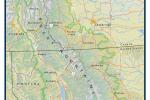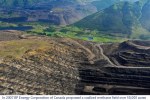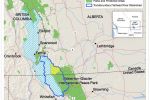Recognize and respect immediate economic needs without sacrificing long-term character and the geotourism potential of the destination.
Growth is a catalyst for economic prosperity, a desired goal for most modern communities. However, it is crucial to incorporate preservation of the elements of local character that make a place unique so as not to lose the very thing that inspired the growth in the first place. In the Crown of the Continent region this means planning for growth in ways that protect the wildlife sightings, rural businesses, wide-open spaces, scenic views and dark night skies we are known for. Several departments and committees throughout the region are dedicated to this very purpose: the Confederated Salish & Kootenai Tribes Land Use & Development Planning, the Flathead County Zoning & Planning and the Lake County Planning Department, just to name a few.
The Flathead Watershed is an area in the Crown of the Continent region where significant planning efforts, primarily led by the National Parks Conservation Association (NPCA), are making way for long term preservation of local character.
The Flathead Watershed encompasses all the land that drains into the Flathead River and Flathead Lake, including Glacier National Park as well as the wild, unsettled Canadian Flathead valley. This area provides critical habitat for wildlife such as grizzly bears, wolverines, elk, and mountain goats and is one of the most biologically intact ecosystems in North America. The pristine landscape is also enjoyed by visitors from all over the world for a wide variety of recreation activities including fishing, hiking, and rafting.
However, this wild and special place was also targeted by large companies for industrialization, specifically for coal strip mines, coal-bed methane extraction, and gold exploration in the Canadian headwaters of the Flathead River.
The NPCA formed a coalition of community, business, and conservation organization members from both Montana and British Columbia to ensure that the proposed mining and drilling in the Canadian Flathead Valley would not harm Waterton-Glacier International Peace Park. They began working with top scientists and public officials in both nations to identify critical information gaps about water quality, fish and wildlife conditions in the international watershed. Additionally, the UNESCO World Heritage Committee sent a fact finding mission to the area to investigate proposed mining operations and the U.S. Secretary of the Interior, Ken Salazar, visited the Flathead River to get a firsthand view of the situation.
In 2010, as a result of all of the research and public activism (more than 50,000 letters and emails were sent to leaders in Canada and the United States asking for change), former Montana Governor Brian Schweitzer and British Columbia Premier Gordon Campbell signed an historic agreement promising to permanently protect the Transboundary Flathead River Valley from all types of mining and oil and gas extraction. The agreement not only exemplifies how proper planning is being used to protect the long term character of a place despite short term economic pressures, but also provides proof of the power of working together across borders.




